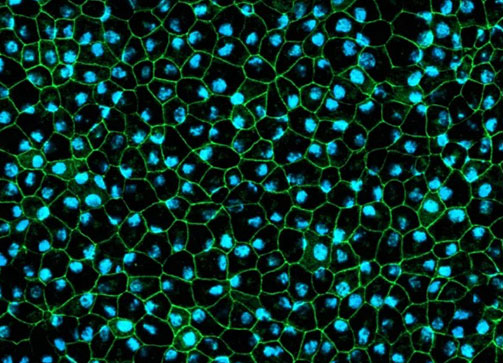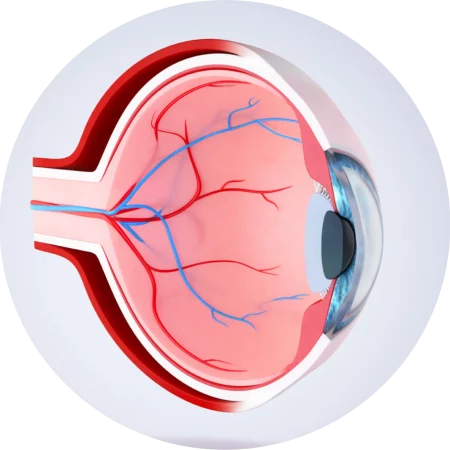Why use validated retina tissue models?
Accurately mimic physiology of the human retina
Predictive of human response
Well-controlled production process
Robust data
Readily available
Short timelines to results
Retina tissue models
Retinal Organoids
Functional iPSC-derived retinal organoids with all the cell types and laminar cell organisation that recapitulate the complex structure of the human retina. They contain the outer photoreceptor segment of the retina that responds to light.

Retinal Pigment Epithelium (RPE)
A functional 2D model of retinal pigment epithelial cells generated from human iPSCs recapitulating phagocytosis of photoreceptor outer segments. The RPE cells are pigmented and displays typical cobblestone morphology.

Products
- Fresh neural retina (fully stratified including photoreceptors) at Day 150
- Customisable time points on request D60 D90, D180 and D210
- Retinal organoids cell pellets
- Frozen sections of retinal organoids
Services
All services can be provided on retinal organoids or RPE derived from healthy donors, patients or CRISPR-edited IPSCs.
Retinal Model Capabilities
Dr Valeria Chichagova, Director of Technology
Working with us
Timely service
With regular manufacturing of retinal organoid batches, our services and product supply timelines are short. Retinal organoids can be harvested at various times points during differentiation according to the maturation stage of the main cell type of interest. Typically, we offer organoids at day 150, but we offer full customisation of the model to suit your requirements.
Model validation
Our retinal organoids and RPE models are well-characterised and rigorously validated to ensure the generation of robust and comparative data predictive of the human retina. Assays have been optimised to work with the unique nature of 3D retinal organoids.
How we support our clients
By providing predictive data, we give our clients confidence in their key decision processes, such as the selection of the optimal viral vector for gene therapy or selection of a lead compound in vitro for retinopathies.
Our expertise
Investing over 3 years in development and completing numerous studies for customers our team has unrivalled expertise in application of human iPSC models of the retina. We can work with you to design the right study to provide data on large and small molecule effects on the retina to assist in candidate progression.



